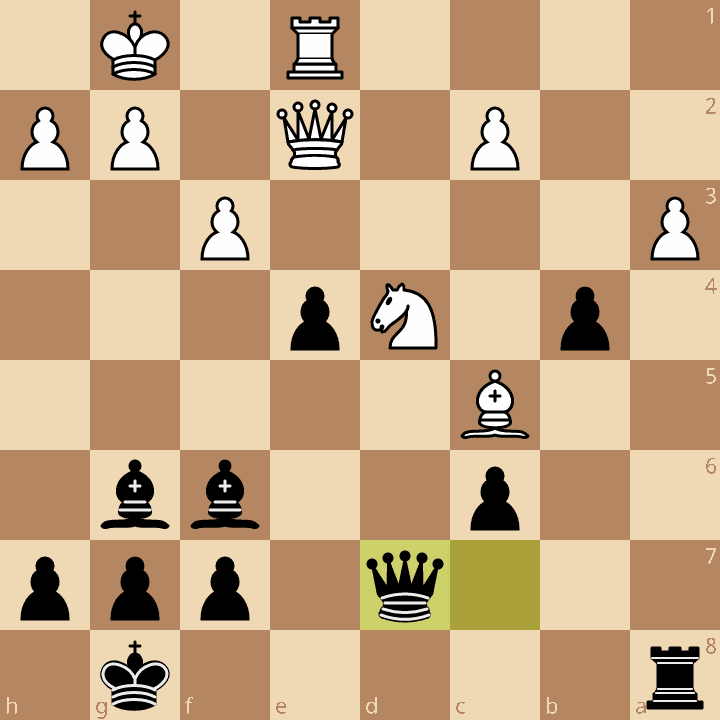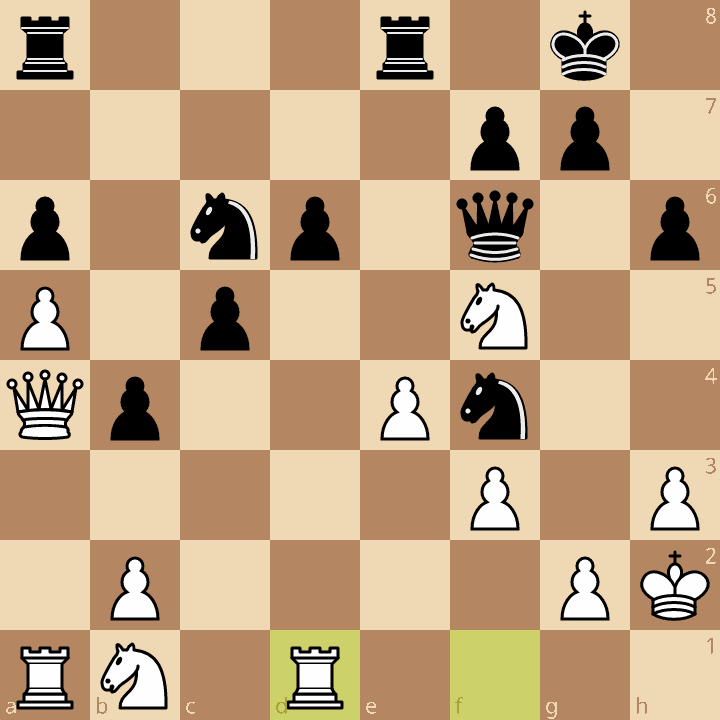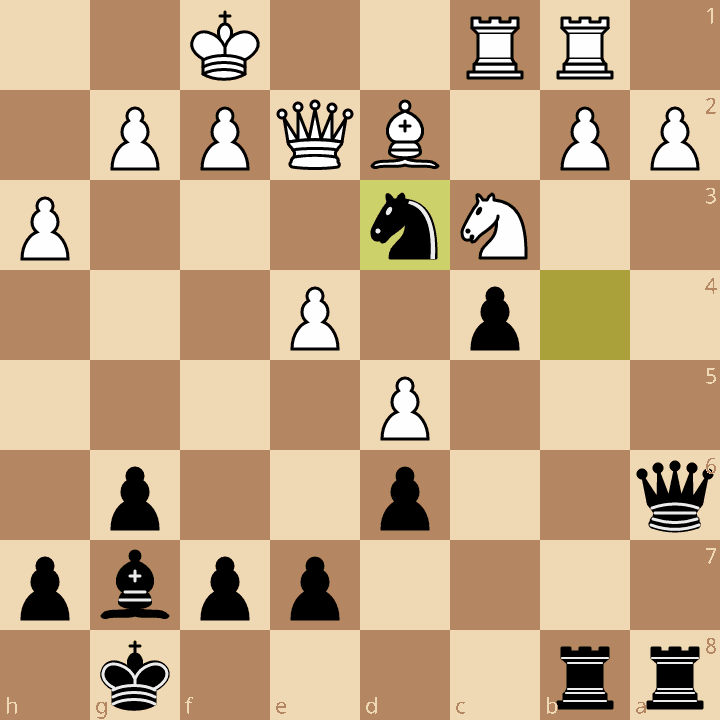This year I decided to enter the Sacramento Chess Championship for the first time. I wasn’t sure if I would write about it and post on here, but I think I will because it helps me to come to terms with what happened in my games.
I wasn’t in it for the money, I just wanted to try a big tournament, and this one was in my backyard. The tournament hall was 10 minute’s drive away. It doesn’t get much better or more convenient than that!
Day 1
I had originally intended to enter the three-day tournament schedule, which consisted of two 90+30 games per day. However, for some inexplicable reason, I mistook the start day a day later than it actually was, and at a bit after my game was officially forfeited, I got an email asking me if I made a mistake when I was supposed to sign up. Whoops.
I rushed over there, and it was decided that I would enter into the 2-day schedule, which is three 60+d5 games + 1 90+30 game, then one day of 2 90+30 games. In the mean time, fresh back from a vacation and long drive to Oregon, I just hung out in the hotel lobby and played blitz for a few hours with whoever was available. In hindsight, this wasn’t the worst thing that could have happened, because it allowed me to let loose a bit after having spent time in the boonies where Starlink was reliably hiccupy to the point that I couldn’t really play any real chess games for the past week.
Day 2
I woke up, had some breakfast, and gathered a bunch of stuff to eat while at the tournament (chess tournaments on the weekend are insane, and I usually feel famished after a series of long games). Then I made my way over to the tournament hall. For my first game I was paired with a 995-rated player who I had made acquaintance with at previous tournaments and also the recent simul event with GM Joel Benjamin.
I had predicted we would play, and did a little bit of prepping for his off-beat response to the Ruy Lopez, but in the end I played with the black pieces.
Game 1
It was a Scotch Gambit (after 1.e4 e5 2.Nf3 Nc6 3.Bc4 Nf6 4.d4 exd4 5.e5 Ne4), which was when my opponent needed to think.
This is a rather nice line for Black, though one time I played an NM in an online simul, and distinctly remember him demurring that this must have been an error. He played 6.c3, and I could have responded with d5 immediately, but instead went into a harmless line with Be7. In any case, I score decently with this line, around 53.5% in my favor. I rather like it. It’s from Jan Gustaffson’s Lifetime Repertoire on Chessable, and the Scotch Gambit lines there are rather solid. My opponent was rather pessimistic about the game, but in my opinion he played rather strongly, and I was a little hesitant which cost me lots of winning opportunities. In the end, he lost on time, but he played a very solid game for almost two hours, and way above his indicated rating. He’s on his way upward. I’m sure of it.

Later in the tournament we had a quick chat about his study routine, and I learned that he studies a lot — like, a couple hours a day — but only plays a couple games per day. I suggested to him that he should play more — in fact, at least half his time should be spent playing at his level (I think this holds true until probably 1400 strength or so). My main point was that he’s got to get his reps in. You’ve simply got to do things over and over and play lots of games to recursively improve. He’s studied a lot — but needs more practice. Just play more games. I also suggested the following episodes from the very excellent Chess Journeys podcast:
Disclaimer: I’ve been on this podcast twice, but I didn’t suggest my own episodes. My episodes are 43 and 96, if you’re looking. There are other Nicks on there worth listening to as well, so I’m mostly just clarifying which ones I’m on.
Game 2
I had White this round, against a maybe-teenager rated 1168. It was a Ruy Lopez Neo-Archangelsk, which I don’t see a lot online, but it’s clearly a very reasonable line for Black. It’s much more like an Italian with the bishop outside the pawn chain once black plays d6. Black’s position is active in the center, but slightly loose on the kingside after d6 blocks the bishop from moving back there to defend.
I got the better of it in the opening, and got to this position which I really enjoyed, and then promptly ruined.
What I should have played here, and what I think almost any Spanish player worth their salt would play, was 16.Nbd2. The merits of this move are obvious. It covers the e4 pawn which is currently loose, it develops a piece off the back rank, and connects the two white rooks together (they work better when they can “see” each other). The c4 square is an excellent choice for the knight at a later time once the e4 pawn is sufficiently defended.
Instead what I played was 16.d5?, which doesn’t exactly throw away my advantage, but does make my pawn structure rigid, and allows Black to trade off their bishop which may be a bit of a problem piece since the pawns on b4, c2, and d6 restrict its movement. My position was still better after 16…Bxe3 17.Qxe3 Na7, but then I played two doozies in a row.
Here, Nbd2 is still a Good Move. But instead, ignoring an opening principle I would certainly correct someone else for ignoring, I played 18.Nd4, because, you know, Knight Outpost. I was dreaming of the c6-square. But my opponent found a strong threat and played it immediately. 18…Re8. Then I played, 19.f3??. My idea was simply to shore up the e4 pawn and enjoy some space in the center and on the queenside. After a few seconds’ thought, my opponent played 19…Nxd5! The e-pawn is pinned due to the rook on e8. This is an elementary tactic that I should have immediately seen, but somehow didn’t. I can’t blame the morning fog, it was close to lunch time at this point.
This game should have ended in a big fat L for me, but my opponent didn’t believe in his position enough, and a few moves later, he offered me a draw and I happily accepted:

After this game, my opponent and I had a little post-mortem and I encouraged him to trust his positions a bit more. Then I ate some lunch and counted my blessings.
Game 3
I got the White pieces again against a 1985-rated player (who is currently the blitz champion at the Sacramento Chess Club). He played a Four Knights Sicilian Defense, and by move 8 we were “out of book”, relying on our understanding to play pure chess. I’ll post the gif below, since there are way too many moments for me to break down on this one, and I’m pretty happy with the result, though the computer shoots so many holes in all of my ideas. My impression of this game is that I played at about my level, but my opponent played well below his.
A few thematic elements of this game stood out to me.
My opponent didn’t know what to do after 8.Nxc3. The move 8…h6 was a huge waste of time.
After 8…h6, I should have played 9.Qd6 to prevent the king from castling. The point is that after 9…Qe7 10.Qg3, my opponent still cannot castle due to 10…O-O 11.Bxg6!
My opponent took the time to win a pawn, but at a huge cost to his development. I got to plant my knight into the d6 square where it became a headache for the rest of the game even as it continued to bounce around and harass the queen with both my minor pieces, and eventually they all take part in the final mating attack.
This French Sicilian structure was a huge liability for the rest of the game. My opponent’s bishop was hemmed in by its own pawns and it never moved off the back rank. I was virtually up two pieces since the queenside rook never got to do anything either.
The engine shoots many holes in my ideas. I missed a lot of winning ideas and gave my opponent many chances to defend. Defending is hard in chess, though, and my opponent never seemed happy with his position — body language was a huge tell for the whole game, which gave me confidence that I could win.

Game 4
This time I got the Black pieces again, and was paired with a 1970-rated player. We played into a Benko Gambit, and I got a reasonable position rather quickly.
My relationship with the Benko Gambit is one of admiration — I really enjoy this opening. But I also don’t score particularly well with it. Of the 200+ games I’ve used it online, my score is about 47%. That’s not bad, but not as good as I’d like. Can’t have everything. The thing about this opening is that when you get an ideal position, it really works. Black gives up two pawns on the queenside so his rooks have easy targets.
By move 15, I’ve equalized. My plan now is to move my queen off the back rank so I can play Rfb8, hitting the a- and b-pawns with my rooks connected together liked cannons aimed at marching infantryman.
Just a few moves later, I’ve got my preferred setup and this is probably my favorite position from the entire tournament:
After some deliberation and knowledge of the Benko endgame (look at those beautiful pawns), I offered the endgame with the move 19…Qa6! The motive was ulterior. I thought the endgame was better for Black despite being down a pawn, so I could bully my opponent’s queen around a little bit. After a little while, it was clear my strategy had worked, because my opponent responded with 20.Kf1?!. That gave me the opportunity to play the big move: 20…Nd3! with a huge outpost. My opponent was practically forced to play 21.Rc2, and we came to this position:
This was an amazing position, and I sought to continue my plan of cementing the knight into the center forever with the move 21…c4?!. After a while, my opponent responded with 22.Bd2, and I had to think about the position some more. I came to the conclusion that I didn’t have much better than to repeat the position. If I try to win the a-pawn with Nb4, we simply trade into an equal endgame where I might be a bit better, but by no means winning, just on the better side of a draw. I had also been nursing a giant headache and hungry stomach, because it was close to 7PM and I had exhausted all my supplies in my backpack. This factored into my decision to play 22…Nb4 (threatening the rook on c2) 23.Rcc1 Nd3, threatening to repeat by continuing to attack the rook, at which point I offered a draw and my opponent accepted.
In our post-mortem we determined that the move 21…c4 was “too committal”, because the pawn is now weak with no fellow pawn defending it, and it’s an easy target that allows White to keep the game equal. But I was still really proud of the way this game turned out. It was probably the most technically correct game I played this entire tournament.
After this I grabbed some Chipotle with a chess buddy and a new acquaintance, and shot the shoot the kind that chess players do. Then I went home, put my games in the lichess study, and called it a night, eager for the next day.














I remember when there was a time when I could actually win one out of every 10 games or so against you. You have enhanced your playing exponentially my friend!
Great thoughts. Fun to read!